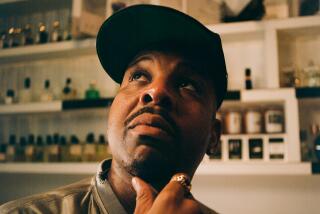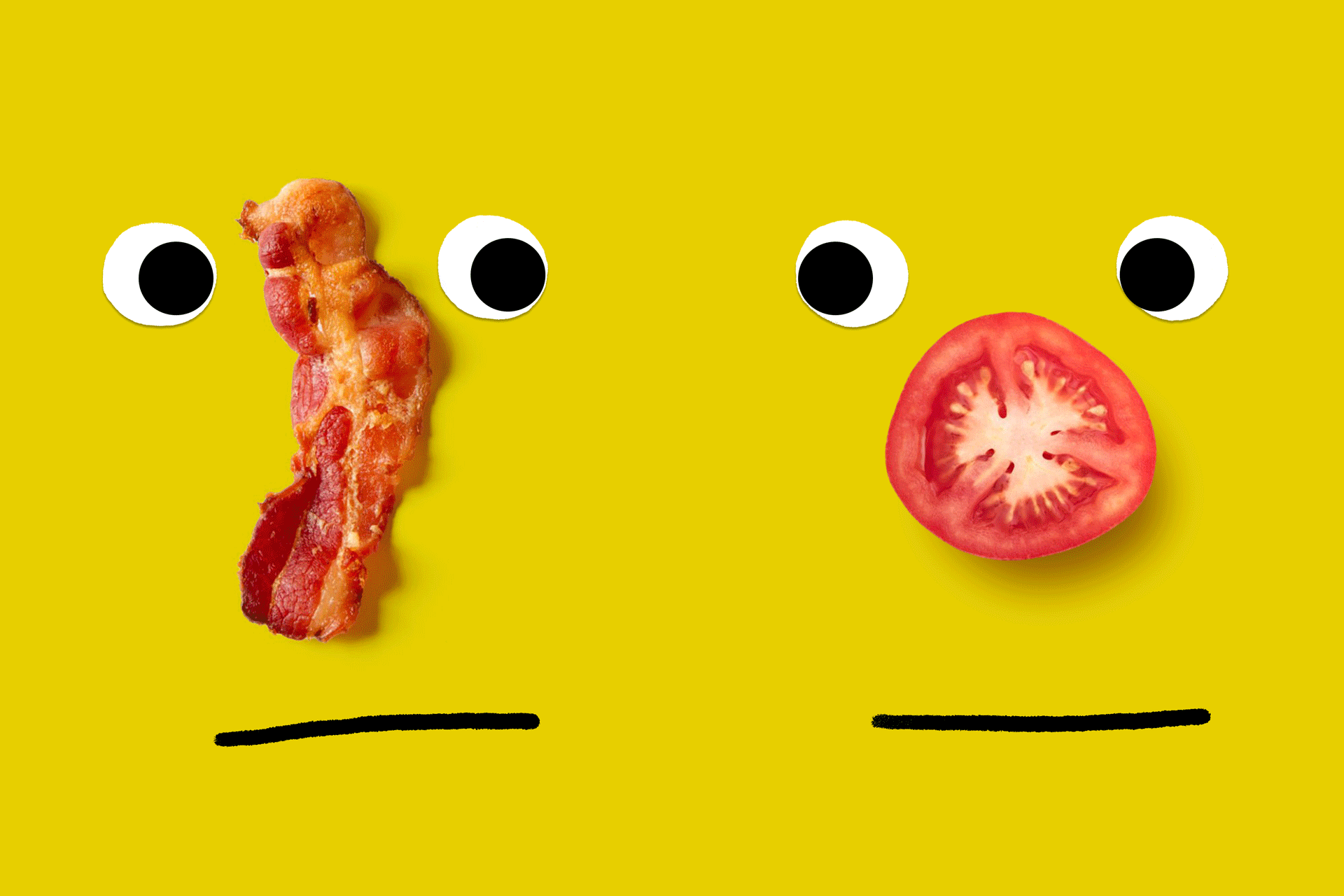The scent of a man
- Share via
What should a man smell like?
This is not an inquiry to be undertaken lightly — particularly at this time of the year when the gantlet of parties, events and mixers that stretches from Thanksgiving into the new year is destined to put the fragrance profiles of near strangers beneath our noses as surely as stockings dangle from the fireplace mantle.
It’s a timely question for other reasons. According to the NPD Group, a market research firm, one-quarter of all annual sales in the prestige fragrance category (defined as the scents sold at the department store level and higher) take place the two weeks before Christmas.
And if you consider that the men’s side of that fragrance business is growing faster than the women’s (12% compared to 9%, according to an NPD report on sales from January to October, 2011) and that Gucci Guilty Pour Homme topped the list of fragrance launches this year, then all attempts to divine the olfactory essence of dudeness become a matter of both dollars and scents.
So, one way to answer the question is to look at what men (or the people who shop for them) are actually buying. NPD says that during the first 10 months of this year, the five bestselling men’s fragrances were Giorgio Armani’s Acqua di Gio Pour Homme (in the No. 1 spot), Chanel’s Bleu de Chanel, Gucci Guilty Pour Homme, Armani Code and Dolce & Gabbana’s Light Blue Pour Homme.
What do all of these fragrances have in common — besides abundant references to the color blue and things aquatic? They all have scent profiles grounded in a combination of wood (including but not limited to forests full of cedar, sandalwood, juniper, oak moss and musk wood) and spice (practically an entire rack full of Szechwan pepper, ginger, bergamot, coriander and pink peppercorns).
Pull the common elements from those bestsellers, says Mark David Boberick, managing editor for the online fragrance publication the Perfume Magazine and a guy can start to get a whiff of what America’s everyman most likely smells like. “Nowadays, it’s all about the aquatics mixed with the woods,” Boberick said. “Scents like Bulgari Acqua are a good example. It’s aquatic but has a woody base. And Bleu de Chanel is the same way.”
Does that mean Gucci Guilty Pour Homme (which we found redolent of cedar-planked orange slices dipped in glacier water) became the bestselling fragrance launch of the year because its chemical cocktail approximates quintessential manliness in some unique and different way?
Boberick doesn’t think so. Gucci Guilty Homme “smells like a lot of other men’s fragrances, with maybe a slight twist,” he said. “It’s good stuff but it’s not groundbreaking. What probably put it on the list was an exceptional advertising campaign and a designer luxury label.”
The designer luxury label is the Italian fashion house of Gucci, of course, and the exceptional advertising campaign he’s referring to includes a fever dream of a commercial directed by writer-artist Frank Miller (who wrote the comic-book series “300”), which features a leather-jacket wearing Chris Evans (“Captain America”) roaring through darkened city streets on a fire-belching motorcycle on his way to bed Evan Rachel Wood (“The Wrestler,” “Ides of March”).
Gucci’s ad campaign is just the latest to rely on serious Hollywood firepower to promote a new men’s fragrance. When Chanel’s Bleu de Chanel launched in 2010, commercials starring French actor Gaspard Ulliel had none other than Martin Scorsese in the director’s chair and a Rolling Stones song on the soundtrack. The video on Chanel’s YouTube channel has been viewed nearly 1.25 million times since it was posted 15 months ago, and the scent has become the second-best-selling men’s fragrance of 2011.
Celebrity affiliation — via advertising campaigns or full-on celebrity-branded product — has long been a key way to create the emotional connection and resonance needed to sell consumers on pretty bottles of scented liquid. Matthew McConaughey doffs his shirt for Dolce & Gabbana’s the One for Men; James Franco was the face of Gucci by Gucci Pour Homme; and country singer Tim McGraw had a hit with his own branded fragrance, to mention but a few.
“A celebrity endorsement is a shorthand way of saying it’s a scent of significance,” Boberick said. “In this age of the Internet and the fixation on celebrity, for someone who isn’t thinking too much about it, the idea that they might smell like a celebrity — or what a celebrity wears or puts their name on — is an easy way out. It’s acceptable.”
Another way to answer the question of what a man should smell like — at least when the goal is attracting a mate — is to determine what smells cause the greatest increase in sexual arousal. Which is exactly what Dr. Alan R. Hirsch and his colleagues at the Chicago-based Smell & Taste Treatment and Research Foundation endeavored to do back in the mid-1990s. According to their widely reported findings, the odor that resulted in the highest level of arousal among females was the combination of Good & Plenty candy and cucumber. (Men, they found, responded best to a combination of lavender and pumpkin pie.) But Hirsch says those findings come with a couple of caveats.
“There are certainly trends in scents,” Hirsch said. “So, yes, it’s possible that something else — say the smell of cotton candy or the new iPhone — could cause greater sexual arousal. You also have to realize that humans can detect anywhere from 10,000 to 30,000 different odors. Clearly, we couldn’t have even begun to test all of them, so it is a distinct possibility that other odors would have an effect — maybe even a greater effect.” (Hirsch explained that in early tests, the scent of baked goods was intended to be used as a control but became more integral after researchers noticed how test subjects were reacting.)
Although Hirsch hasn’t updated his results (to see whether, perhaps, the smell of a new iPhone is a turn-on), he says the foundation continues to study the effects of odor on perception. One such study discovered that a “spicy floral scent” resulted in a man perceiving a woman to be approximately 12 pounds lighter, and that the scent of pink grapefruit caused him to perceive a woman to be six years younger. And the combined scent of eucalyptus, camphor and menthol induces feelings of empathy in both genders.
And, while we may not be any closer to answering our inquiry about what a man should smell like, Hirsch offered some guidance about what a man probably shouldn’t smell like: “Cherries, charcoal barbecue smoke and men’s cologne,” he said, “were the things found to be the biggest turn-offs to women.” (It should be noted that the study failed to identify any scents that decreased sexual arousal in men.)
Hirsch explained that the inclusion of men’s cologne on the list more than likely stemmed from the subjects’ repeated exposure to men who, on the whole, tend to drench when they should splash.
“It’s important to remember that women have a much better ability to smell then men do,” he said. “So men tend to use a lot more cologne, body spray or what-have-you, and that tends to overwhelm women because their sense of smell is so much better.
“Also, men tend to go out with women that are usually younger than they are, and when you’re younger, your sense of smell is much better.”
Hirsch’s rule of thumb? “if a guy is putting on the amount [of fragrance] he thinks he should be putting on, it’s probably too much.”
In other words, no matter what a man should smell like — and to hedge our bets we’re going with Chris Evans and Matthew McConaughey in a slow-motion Martin Scorsese video where they shirtlessly race motorcycles through a grove of moss-covered cedar trees, pockets bulging with pink peppercorns, cucumbers and Good & Plentys — he shouldn’t smell like it too much.







